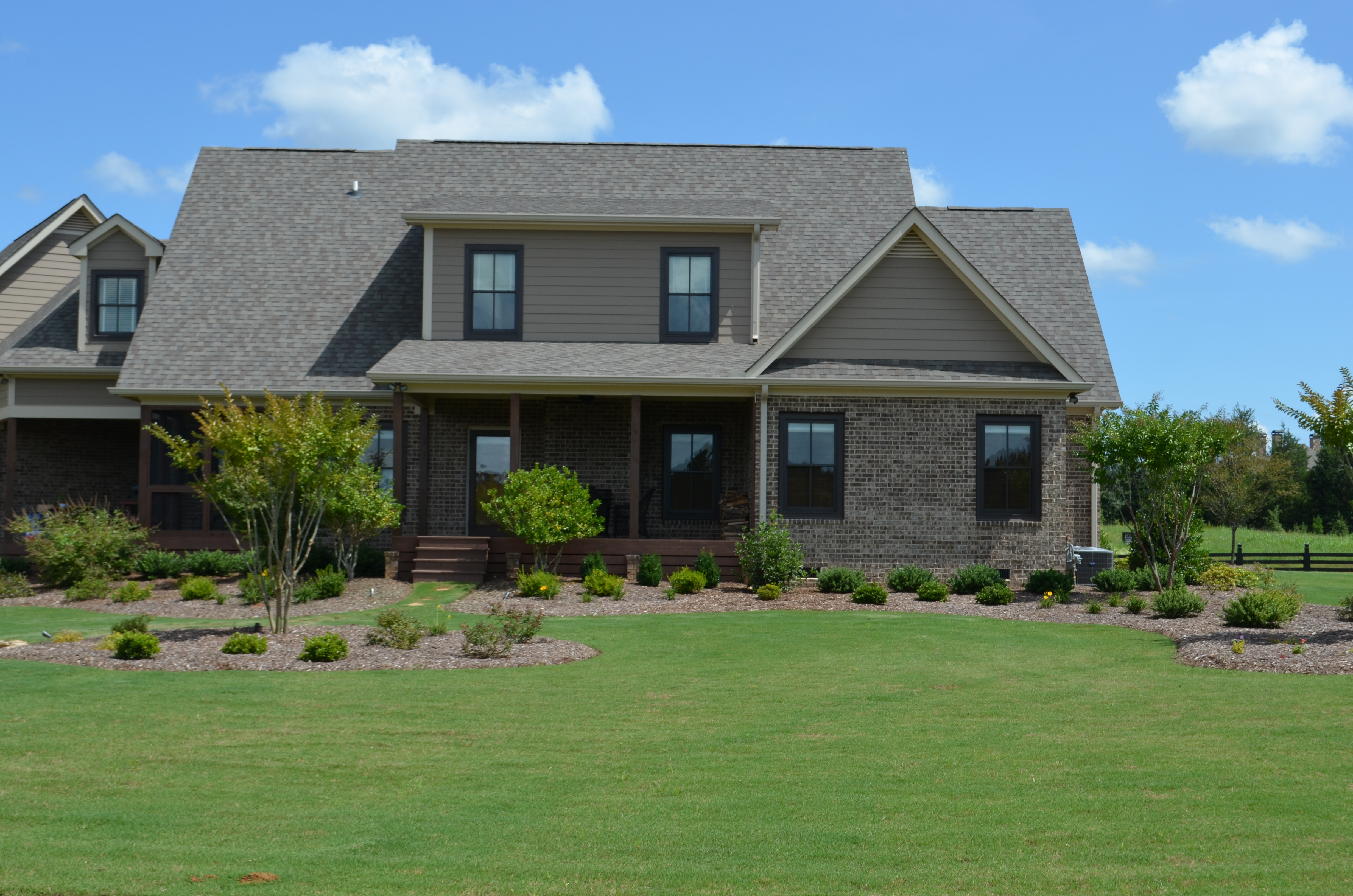Many people are low on time, money, and water these days, but that shouldn’t prevent them from having gorgeous landscaping. The upkeep a regular grass lawn requires can be exhausting, but there are alternate groundcovers that can make your landscape look manicured, beautiful, and interesting – all with little to no maintenance.
The Impact of a “Green” Turf Lawn
Having a green, healthy lawn is a source of pride for many homeowners. However, considering the pesticides, herbicides, and gallons of water that go into keeping the green grass green, it isn’t very green. In the United States, landscape irrigation consumes nearly 9 billion gallons of water per day. Inefficient systems that dump water onto the curb or street waste as much as half of this water.
Herbicides and pesticides aren’t healthy for the environment, and neither are the emissions a gas-powered lawnmower gives off. Choosing an alternate type of groundcover not only saves you time and money but also helps your home be more eco-friendly. If more people opted away from typical turf lawns, it would help America regain control over the current water crisis.
Many groundcovers and innovative grasses require little to no watering or mowing, keeping the Earth a little greener. Reduce your reliance on expensive irrigation systems, leave the pesticides behind, and enjoy an impressive lawn without the need for grass. Some of the most beautiful landscapes opt for no grass at all – instead using colorful flowers, creeping perennials, or patchwork techniques to cover the ground.
Finding the right groundcover for your home’s landscaping requires knowing all your options and choosing the one that best fits your yard’s aesthetic. Groundcover can be drought-tolerant, deer-resistant, sun-and-shade friendly, durable under foot traffic, and work as a barrier. The goals you want your landscaping to meet will help you decide which groundcover plant is best for you.
Spreading and Creeping Groundcovers
Most popular groundcovers are of the spreading or creeping variety, covering large areas of landscape quickly and easily. Many groundcovers can creep up fences, creating barriers between you and your neighbors. Others are ideal for filling in gaps in a walkway or in places where grass won’t grow. English ivy gives your home a rustic, lush look with bountiful green leaves. This popular vine is ideal for shady areas and can cover walls or fences.
Vinca is a coarser option that prefers partial sun. It spreads quickly, has blue flowers in late spring, and is relatively drought-tolerant. Ground-hugging creepers like creeping raspberry are tough and can survive foot traffic. Golden creeping Jenny is a beautiful alternative to green groundcover, but thrives best in moist environments. Blue star creeper can grow in full sun or partial shade, is tough and easy to grow, and has tiny, delicate, sky-blue flowers.
Drought-Tolerant Plants
Many groundcover plants need minimal watering and can withstand periods of draught or high sun – while retaining their vibrant colors. Grass lawns turn brown if they aren’t the right temperature or don’t get enough water, but many alternatives to grass can stay green without the need for an irrigation system.
There are drought-tolerant groundcovers for sun, shade, or both. Creeping varieties of thyme can withstand full sun or shade, well-drained soil, and moderate foot traffic. Thyme is aromatic, and it can cover the ground with tiny, fragrant leaves and flowers. Some forms of creeping thyme grow less than three inches high, resembling a lush moss that’s perfect in between stone walkways or in rock gardens. Other forms are taller and resemble green or silver carpets.
For dry, shady areas, there are many groundcovers that have flowers, such as creeping myrtle, creeping mahonia, and sweet woodruff. For sunny areas, drought-tolerant groundcovers include rockrose, snow in summer, moss phlox, and winecups. They all have colorful blooms that appear throughout the year.
Evergreen Groundcover
A main reason homeowners choose groundcover plants instead of typical turf lawns is to enjoy year-round color without having to use complicated and expensive irrigation systems. Most groundcover plants are evergreen, including brass buttons, Mondo grass, lamb’s ears, variegated liriope, and Asian jasmine. Brass buttons come in shades of bronze, purple, gray, and black. They have yellow-green blooms in spring and summer and maintain a feathery, textured look year-round.
Floral Groundcover
If you’re looking to add a bit of color to your lawn, one landscaping technique is to build a manmade incline and cover it in florals. Floral groundcover comes in almost any shade you can imagine. Low-growing flowers are popular for homeowners who want to add variety to green landscaping without the extra maintenance.
Verbena “homestead purple” is a vibrant purple shade that blooms from spring to frost. It can cover a bank and is heat- and drought-tolerant. Pink Chablis is great in mixed sun and shade, with elegant pink blooms and lots of greenery. For groundcover that draws attention, opt for shrubs such as Japanese Picta, a groundcover plant full of bright yellow blooms during multiple seasons. This plant also gives your lawn a bit of height, with branches that reach the ground. Colorful groundcover roses are a classic, beautiful choice for a spring garden.
Groundcover Patchwork
If you can’t decide on just one groundcover plant, a patchwork-style design is the perfect compromise. This landscaping technique uses different types of groundcover in geometric blocks to achieve a look similar to fields from up in the air. Groundcover patchwork uses silver, gold, and shades of green groundcover, divided by boxwood hedges. Patchwork doesn’t require extensive watering or upkeep, and it looks stunning and unique.
Whether you want your landscape to be reminiscent of an English garden or a lush, green getaway, groundcover plants are a viable, Earth-friendly, and low-maintenance solution. Spend your summer enjoying your gorgeous landscaping instead of pulling weeds and struggling to keep grass alive. As more and more homeowners turn away from typical turf lawns, groundcover is quickly becoming the new grass.

